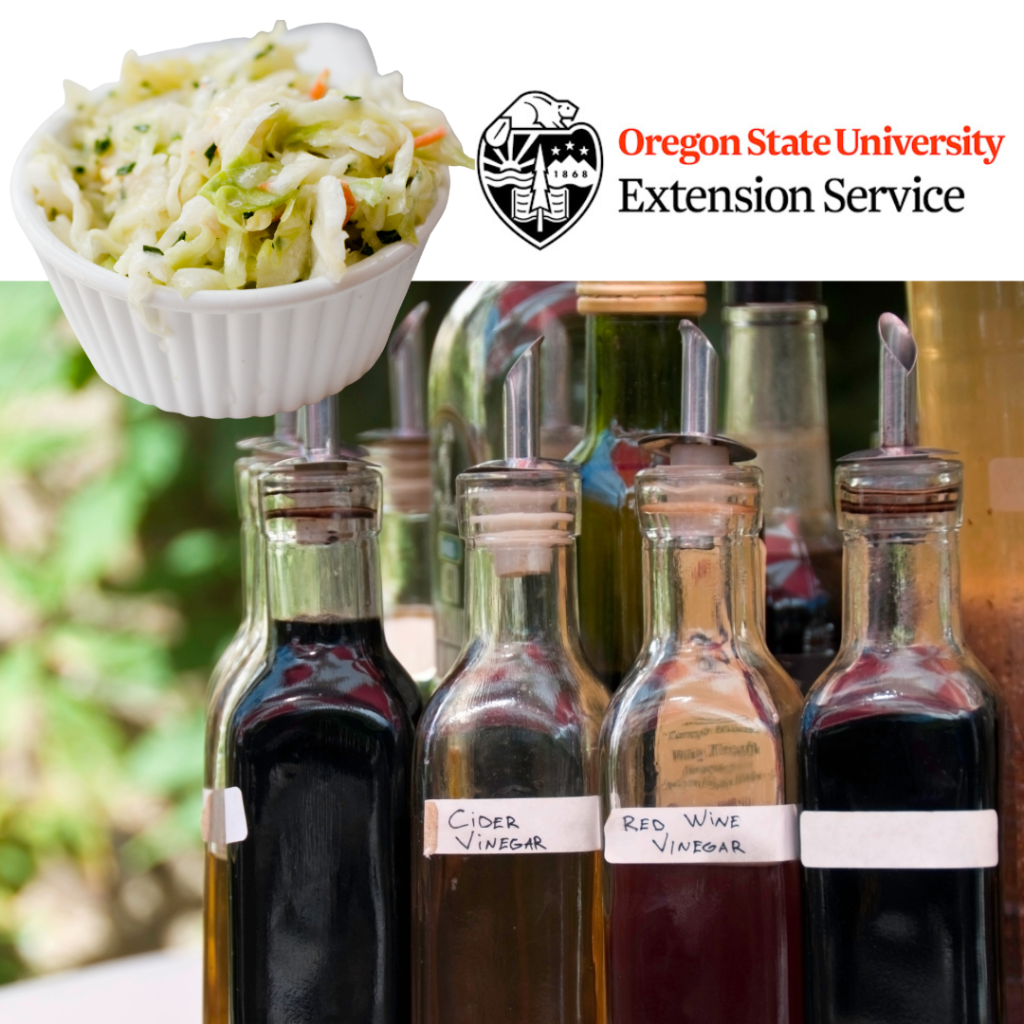Event Flyers
Vinegar!
This month’s Warm Springs OSU Extension theme is Vinegar!
Vinegar can brighten and balance flavors without added salt, sugar or fat.
Commercial vinegar is produced either by a fast or a slow fermentation process. In general, slow methods are used in traditional vinegars, where fermentation proceeds over the course of a few months to a year. The longer fermentation period allows for the accumulation of a nontoxic slime composed of acetic acid bacteria and their cellulose biofilm, known as mother of vinegar.
Fast methods add the aforementioned mother of vinegar as a bacterial culture to the source liquid before adding air to oxygenate and promote the fastest fermentation. In fast production processes, vinegar may be produced in 1-3 days.
There are a wide variety of vinegars with many uses.
You can flavor vinegars too. It’s something you can do at home by adding fresh, frozen or dried herbs, garlic, peppers, and onions, as well as fresh or frozen fruits!
A favorite use of vinegar is for a salad dressing – using herbs and oil added in.
When it comes to adding herbs and vegetables into oil – it’s important to keep food safety in mind. Commercial garlic-in-oil mixtures are acidified to prevent bacterial growth. For homemade herbs and vegetables in oil, they must be refrigerated or frozen.
Read up on the issue in this article. Herbs and Vegetables in Oil.

